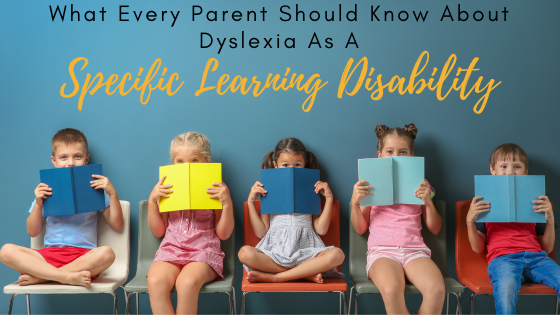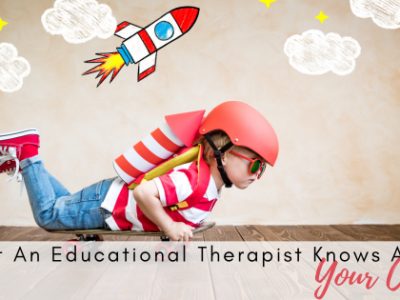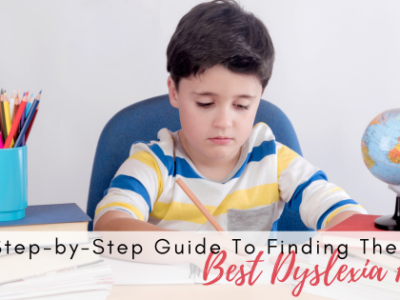
What Every Parent Should Know About Dyslexia As A Specific Learning Disability
Fairy tales, story books, and reading together can make for such sweet moments and memories during childhood. But as parents and educators know, children learn to read at different paces. Sometimes, the process of reading—and enjoying reading—can be affected by a child having a specific learning disability (SLD) like dyslexia. Specific learning disabilities are disorders that interfere with someone’s ability to learn and use certain skills. Most often, SLDs can affect skills such as reading, writing, listening, and speaking, which can make school and learning quite challenging for young students. SLDs can affect people of all different ages and abilities. Dyslexia is a common SLD that causes difficulties with reading, decoding words, fluency, and comprehension. Read on to learn more about what every parent should know about dyslexia as a specific learning disability.
There are many different types of SLDs. Some SLDs include dyslexia, dysgraphia, dyscalculia, auditory processing disorder, and language processing disorder. Each SLD might present with different difficulties in reading, writing, math, understanding spoken language, or expressing themselves verbally. Dyslexia happens to be one SLD that has great research and helpful programs that are built upon solid data; Dyslexia on Demand’s programs are proven to help students succeed.
Educate yourself. If you’re reading this, nice work. You’re already taking the steps to learn more about dyslexia and SLDs. Dyslexia is neurological in its origin. The International Dyslexia Association and the National Center on Improving Literacy can be two great resources for parents to start learning more about dyslexia and more about helping your child.
Specific learning disabilities are not an intellectual or emotional disability. SLDs are also not caused by a lack of motivation on the child’s part. Instead, SLDs are believed to be caused by differences in the brain and in the way the brain processes information. Knowing more about your child’s SLD can help you to better understand his or her struggles, strengths, study habits, and learning abilities.
Some very influential minds had SLDs. Hans Christian Andersen, Agatha Christie, and F. Scott Fitzgerald are all famous authors who all just happened to be dyslexic. Their storytelling and writing abilities—though affected by dyslexia—did not affect their success as prolific writers. This can be true for your student too! An SLD is not necessarily a limitation, but something that can be addressed with the right resources and help.
Become an advocate. Once you know you have a student who has been diagnosed with dyslexia, it is so important to advocate for them in school and in life. The Council of Parents Advocates and Attorneys is a fantastic resource for parents of students with dyslexia to find a great educational attorney or advocate in their area.
Testing is key. For students who may be struggling with certain skills, testing can be a good way to help discover the best interventions and tools to help improve. Testing and diagnosis can help offer relief in the form of answers as to why your student has been struggling. If your student is tested for and diagnosed with dyslexia, it can be quite pivotal. A diagnosis can grant access to resources like accommodations and interventions. Testing can sometimes be difficult to obtain through the school system; a diagnosis from a 3rd party like Dyslexia on Demand can be enough to begin accommodations and interventions for a student.
Intervention is essential. With solid support and interventions, students with SLDs are able to learn and to thrive. Early intervention can be even more helpful for children, as they develop skills that are necessary for success, both in and out of school.
Specialized instruction can work wonders. Students with SLDs can truly benefit from instruction that is geared toward their SLD and specific learning needs. At Dyslexia on Demand, specially trained Certified Academic Language Specialists (CALTs) can work with students one-on-one or in small group settings. Dyslexia therapy programs at Dyslexia on Demand are based on the Take Flight curriculum, an evidence-based therapeutic program that is targeted at creating neural pathways to retrain the dyslexic brain.
You can help at home, too. Creating a supportive home environment for your student with dyslexia can be so helpful. Ensuring students can work, study, and focus in a quiet place is key.
Celebrate your student’s success! Working through a specific learning disability like dyslexia is a process that takes patience and understanding on everyone’s part. Celebrating small gains can help students to stay motivated, inspired, and confident.
There is wonderful help available. Dyslexia on Demand is on a mission to make dyslexia therapy accessible to all students. No matter where you live or what resources are nearby (or not nearby), Dyslexia on Demand can offer your student online programs that work. Every child deserves the chance to be academically successful. Therapy with Dyslexia on Demand is a solution with a holistic approach and long-lasting results. Reach out to Dyslexia on Demand. Learn more at https://dyslexiaondemand.com/, or call 888-292-3906.







